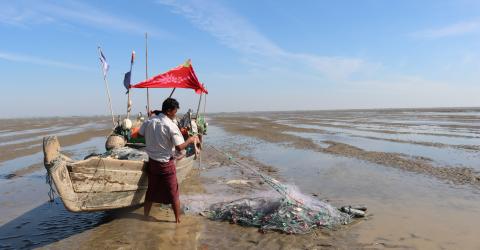
Nine regional projects celebrate the links between culture and wetlands
Wetlands are often associated with long-standing cultural practices that enable human societies to thrive, to adapt to environmental change, and to use nature in a sustainable way. According to data from the Ramsar Sites Information Service (RSIS), nearly all Ramsar Sites provide cultural ecosystem services, and over half have spiritual and inspirational values. Integrating both nature and culture in the management of wetlands can therefore play a powerful role in their conservation and wise use.
Nine regional projects celebrating the links between culture and wetlands projects have recently been completed in the Americas, Africa, Asia and Oceania, and Europe thanks to generous support from the MAVA Foundation in the context of the “Conservation of the natural and cultural heritage in wetlands: Global leadership for an integrated approach through the Ramsar Convention” project (March 2015-March 2018).
Each project was co-financed by Contracting Parties, Ramsar Regional Initiatives, UNESCO Category II Centers, and NGO partners, in line with Decision SC53-15. The nine projects are outlined below, and links are provided to individual articles describing each project.
Outcomes of the nine regional projects include cultural inventories of wetlands in six Arab States and six countries in the Carpathian region, identification of ten cultural heritage ‘hot spots’ in Finland’s wetlands, a report on the gastronomic heritage of Mediterranean wetlands that includes twelve recipes from different countries, and a compilation of 16 case studies across Asia and Oceania showing the many ways in which indigenous peoples and local communities contribute to wetland wise use and conservation.
Additional outcomes include a series of video-conferences on the natural and cultural importance and benefits of wetlands in Mexico, a study on women's knowledge of traditional management of shellfish resources in the Bijagós Archipelago Ramsar Site in Guinea Bissau, and translation of Ramsar Site management documents into indigenous languages in Colombia.
These nine projects not only illustrate the significant cultural values of wetlands, they also support Target 10 of the Ramsar Strategic Plan 2016-2024 on integrating the traditional knowledge, innovations and practices of indigenous peoples and local communities in wetland conservation, and ensuring their full and effective participation at all relevant levels.
- Arab States: Rapid Cultural Inventory of Wetlands in Arab States (Tunisia, Yemen, Iraq, Egypt, Mauritania, Algeria, co-financed and supported by the Arab Regional Centre for World Heritage)
- Mediterranean: Gastronomic heritage in Mediterranean wetlands – healthy wetlands, healthy eating (implemented and co-financed by Med-INA)
- Asia & Oceania: Learning from experience: how indigenous peoples and local communities contribute to wetland conservation in Asia & Oceania (coordinated by Karen Denyer, independent contractor and part-time Executive Officer of the National Wetland Trust of New Zealand, in close collaboration with fifteen partners in the region).
- Mexico: Series of nine video-conferences on the natural and cultural importance and benefits of wetlands, Mexico (implemented and co-financed by Centro de Educación y Capacitación para el Desarrollo Sustentable).
- Colombia: Ramsar, culture and territory: closer to communities (implemented and co-financed by Fundacion Omacha). [FORTHCOMING]
- Guinea-Bissau: Recognising women's knowledge of traditional management of shellfish resources in the Bijagós Archipelago Ramsar Site (implemented and co-financed by Tiniguena)
- Finland: The cultural heritage of Ramsar wetlands in Finland (implemented and co-financed by Metsähallitus)
- Carpathian region: Carpathian cultural heritage in wetlands (implemented and co-financed by the Carpathian Wetland Initiative).
- Switzerland: Awareness-raising and public engagement for ‘river-pearls’ wetlands in the canton of Grisons, Switzerland (implemented and co-financed by WWF Grisons)